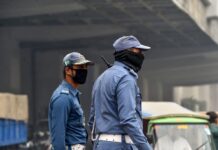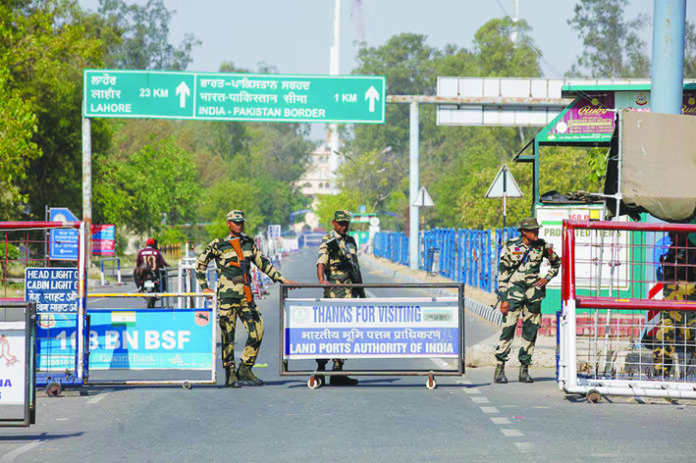We live in the dawn of a dark age. South Asian strategic stability has never been shaken as much as it has after the grave events of May. What had previously been considered a fairly stable deterrence relationship now seems increasingly susceptible to miscalculation, technological evolution, and doctrinal confusion. As India modernizes and transforms its arsenal, Pakistan— and indeed the world— must deal with the risks and obligations that accompany life in a nuclear neighbourhood.
In May, South Asia was on the brink of a nuclear catastrophe. As India outstandingly violated the Line of Control (LoC) and Pakistan’s territorial integrity and sovereignty, the world witnessed how quickly conventional conflict can be raised to the level of nuclear annihilation. As both sides mobilized components of their nuclear command system, there were reports of rising alert levels for missile units. Pakistan was essentially able to deter India from escalation due to its nuclear capability. Even though diplomacy ultimately averted catastrophe, the event highlighted the slim margin for error under which nuclear powers settle disputes under strict time pressures.
In recent years, India and Pakistan have moved to develop their nuclear capabilities, moves necessitated, in no small measure. For India, the post-crisis era has witnessed an increased emphasis on next-generation delivery systems, including MIRV-capable missiles and hypersonic glide vehicles. Ballistic missile defense and early-warning satellite investments, presented as a defensive stance, have been interpreted in Islamabad as attempts to pursue nuclear hegemony and undermine Pakistani deterrence. Concurrently, Indian controversies surrounding the applicability of its No First Use (NFU) policy, which has already been doubted in recent years, have added to the complexity of the strategic environment. When India’s senior leadership indicates NFU may not be operational in every situation, it raises deep uncertainty about thresholds, prompting Pakistan to respond with countermeasures due to India’s growing strategic ambitions and changes in doctrine.
Pakistan, in turn, has remained committed to full-spectrum deterrence within the ambit of credible minimum deterrence, as the pillar of its security posture, a policy intended to offset India’s increasing conventional and strategic capabilities. The Nasr missile’s modernization, command and control upgrades, and collaborations to upgrade defense technology are all manifestations of Islamabad’s determination to maintain stability within an increasingly asymmetrical atmosphere. These serve to keep a check on India’s playing field.
However, it is precisely this dynamic- a cycle of retaliation- that threatens to destabilize the two countries’ quest for stability. With increasingly advanced arsenals and India’s doctrinal shift that fuses conventional and nuclear use, the chances of inadvertent escalation become extremely high. Tactical nuclear weapons, accelerated decision cycles, and dual-capable platforms raise the likelihood that a conflict, accidental or intentional, could cross a threshold from which neither can easily retreat.
The May 2025 crisis serves as a stark reminder that peace in South Asia cannot be taken for granted. India and Pakistan now need to think not merely of deterrence, but of how to make it more secure, through talks, openness, and moderation. It is now time for India to demystify its doctrine and rein in gestures that contribute to insecurity. The fate of one-fifth of the world’s population cannot be left to chance.
The decline of confidence-building measures and channels of dialogue has only added to the deterioration of the region’s security environment. Hotlines and crisis communication mechanisms, once invaluable safety valves, have been abdicated or underused. De-escalation agreements have stalled in the face of political tensions and mutual suspicion. This was demonstrated by the refusal of Indian authorities to communicate promptly with Pakistan in May. In the absence of structured communication and mutual comprehension of red lines, the risk of misinterpretation and miscalculation in future challenges remains perilously high.
Preventive measures must be taken. Re-establishing and renewing CBMs, especially those aimed at reducing nuclear risk, must be given high priority. Increased transparency regarding missile tests, sharper crisis communication guidelines, and cooperative efforts to contain accidents can contribute to reviving confidence and preclude accidents from escalating to disaster.
No less crucial is the renewed commitment to the transparency of nuclear doctrine. For India, this translates into reaffirming or clarifying its NFU policy. For Pakistan, it translates into continuing to play a responsible role and maintaining strategic stability in the region. Pakistan has long stated that its nuclear weapons are weapons of peace, means of securing national survival, and not instruments for coercion.
The international community can also contribute. Although the nuclear challenges of the region are emanating from the Indian government policies, major international actors and cooperative frameworks can assist by promoting technical measures of risk reduction, fostering dialogue, and promoting restraint. The costs of failure are too large to let South Asia’s nuclear future rest on unpredictable odds.
The May 2025 crisis serves as a stark reminder that peace in South Asia cannot be taken for granted. India and Pakistan now need to think not merely of deterrence, but of how to make it more secure, through talks, openness, and moderation. It is now time for India to demystify its doctrine and rein in gestures that contribute to insecurity. The fate of one-fifth of the world’s population cannot be left to chance.






















